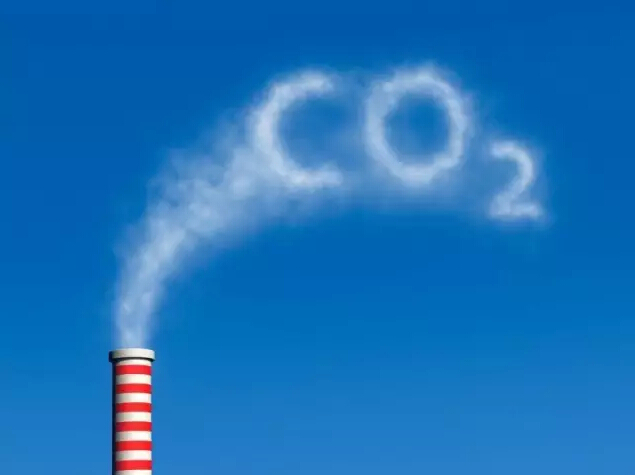(单词翻译:单击)
听力文本
This is Scientific American — 60-Second Science. I'm Julia Rosen.
"We're hearing a lot of the arguments against action on reducing CO2 being based on, 'well CO2 was higher in the past, so we don't have to worry about it.'"
Gavin Foster, a geochemist at the University of Southampton. But Foster says that's a flawed argument. For starters, just how far back in time do you have to look to find CO2 concentrations like what we expect to see in the future, and does it even make sense to compare the levels now and then?
To answer these questions, Foster and his colleagues reconstructed the history of atmospheric carbon dioxide for the last 420 million years. They compiled roughly 1,500 estimates of CO2 concentrations from 112 previous studies. When the researchers combined these data, they found that atmospheric carbon dioxide went up and down over time, but that, in general, it gradually declined from almost 3,000 parts per million down to less than 300 parts per million before humans started burning fossil fuels.
However, we have already started to reverse that trend. If we continue on a business-as-usual scenario, by the middle of this century, CO2 could reach levels not seen in 50 million years, according to Foster's reconstruction. That's long before humans evolved, back when the climate was much warmer and there were no large ice sheets at the poles. If we continue on that trajectory, by the year 2250, concentrations could approach what they were in the Triassic, 200 million years ago, when dinosaurs roamed the Earth.

But greenhouse gases aren't the only factor impacting Earth's climate. The sun also plays a major role. It's grown brighter over time, offsetting most of the cooling related to dropping CO2 levels, Foster's team found. And that fact has important implications for modern climate change. Because while we're headed toward a world with CO2 levels similar to what they were in the distant geologic past, it won't just be like rewinding the clock.
"So, because the sun is now brighter than it was 200 million years ago, or 400 million years ago, that radiative forcing from CO2 in the future is going to be that much more potent. And that, we thought, was quite a strong message that hadn't been noted before."
The findings are published in the journal Nature Communications.
Foster stresses that this isn't a vision of what will be, but what could be. "It's more of cautionary note that, in the absence of any action, we will be entering a world quite rapidly—in the next 150 years—where the climate is receiving a magnitude of forcing that, as far as we know, it hasn't received for 420 million years...it's outside the bounds at which the Earth is normally functioning. Doesn't sound like a good place to be to me."
Thanks for listening for Scientific American — 60-Second Science Science. I'm Julia Rosen.
参考译文
这里是科学美国人——60秒科学。我是朱莉娅·罗森。
“我们听到很多反对降低二氧化碳行动的言论,他们的依据是,‘以前二氧化碳含量更高,所以我们不必为此担心。'”
加文·福斯特是南安普顿大学的地球化学家。但是福斯特表示,这种说法存在缺陷。首先,要追溯到过去什么时候,才会发现像我们预期看到的那种二氧化碳浓度;其次,对比现在与当时的二氧化碳水平有意义吗?
为了解答这些问题,福斯特和同事重现了过去4.2亿万年的大气二氧化碳历史。他们从此前112项研究中汇总了近1500种二氧化碳浓度的估值。研究人员在汇编这些数据时发现,随着时间的推移,大气二氧化碳浓度在不断涨落,但是总体而言,在人类开始燃烧化石燃料之前,其浓度从近3000ppm下降至300ppm以下。
但是,现在我们已经开始扭转这一趋势。如果我们继续一切照旧,即继续燃烧化石燃料,根据福斯特的重建,到本世纪中叶,二氧化碳水平会达到近5000万年来的最高水平。5000万年前,人类还没有进化,气候也比现在温暖很多,两极也没有大冰原。如果我们继续这种轨迹,到2250年,二氧化碳水平将达到2亿年前的三叠纪时的水平,那时恐龙还在地球上漫步。
但是温室气体并不是影响地球气候的唯一因素。太阳也扮演着重要的角色。福斯特的团队发现,随着时间的推移,太阳的亮度不断增加,这会抵消二氧化碳水平降低所带来的降温。这一事实对于现代气候变化有着重要的意义。因为虽然未来世界的二氧化碳水平同遥远的地质时期的二氧化碳水平相似,但是这并不像回拨时钟那样简单。
“因为与2亿年或4亿年前相比,现在太阳的亮度增加了,所以来源自二氧化碳的辐射强迫会大大加强。我们认为,这是我们之前没有注意到的重要信息。”
这项研究结果发表在《自然通讯》期刊上。
福斯特强调,这并不是将会发生的愿景,而是有可能发生。“这更像是种警示,如果不采取任何行动,那在未来150年,在我们将进入的世界中,气候遭受的辐射强迫会越来越强,据我们所知,那是近4.2亿年没有过的强度,那已经超出正常范围了,不过地球仍在正常运行。但是在我看来,那已经不是适宜的环境了。”
谢谢大家收听科学美国人——60秒科学。我是朱莉娅·罗森。
译文为可可英语翻译,未经授权请勿转载!
重点讲解
重点讲解:
1. for starters 作为开端;首先;第一;
例句:Her manager said, 'It will cost her 1.5 million pounds for starters if she loses.'
她的经纪人说:“如果她输了,她将首先会损失 150 万英镑。”
2. up and down 上上下下;来来回回;
例句:They were jigging up and down to the music.
他们随着音乐的节拍轻快地上下跳着。
3. in general 总的来说;总体上来看;大体上;
例句:She had a confused idea of life in general.
总的来说,她对生活非常困惑。
4. business-as-usual 一切如常;处之泰然;
例句:The next day, rain or no rain, it was business as usual.
第二天是否下雨都没有差别,一切照常进行。


